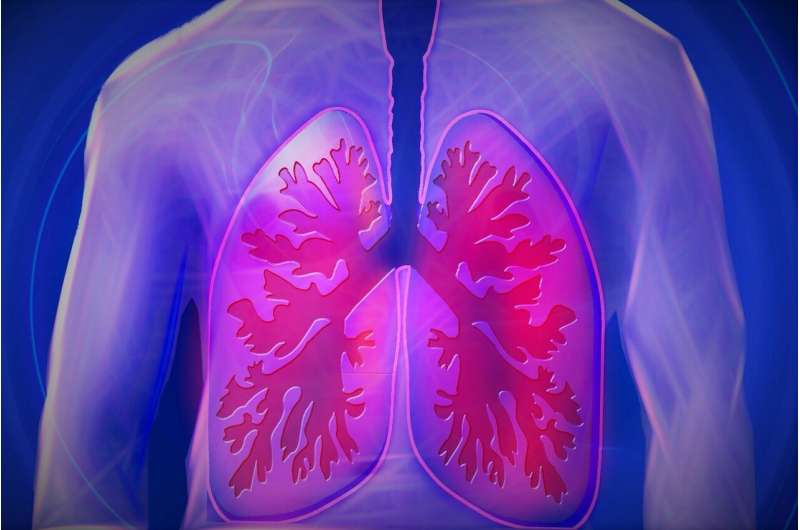This article has been reviewed according to Science X's editorial process and policies. Editors have highlighted the following attributes while ensuring the content's credibility:
fact-checked
peer-reviewed publication
trusted source
proofread
Study shows key role of physical activity and body mass in lung function growth in childhood

A new study led by the Barcelona Institute for Global Health (ISGlobal) sheds light on the growth of lung function in children. The results show that increased levels of physical activity and a higher body mass index (BMI) play a key role in the recovery of early deficits.
These findings, published in the journal Thorax, have important implications for clinical practice, research and public health policy, providing new insights into how to improve respiratory health from childhood to adulthood.
The study analyzed data from the Spanish birth cohort of the INMA—Environment and Childhood project, which included a total of 1,151 children and adolescents aged 4–18 years. The researchers measured lung function with spirometry, a technique that assesses the amount of exhaled air.
More specifically, the researchers measured forced expiratory volume in one second (FEV1), which is the volume of air exhaled in the first second during forced exhalation after a deep inhalation, and forced vital capacity (FVC), which is the maximum amount of air a person can exhale after a deep inhalation without a time limit. While FEV1 is an indicator for how open the airways are, FVC gives insights into the size of the lungs.
From the repeated spirometry, four trajectories of lung function growth were identified: a low trajectory (19% of the sample for both FEV1 and FVC), a normal trajectory (62% and 63%), a high trajectory (16% and 13%) and a final trajectory called "catch-up" (2% and 5% of the sample). The "catch-up" group started with lung function values below the low trajectory and showed accelerated growth between 4 and 10 years of age, ultimately reaching normal lung function values.
"The key finding of our study is that low lung function in early childhood does not automatically translate into poor lung function in early adulthood, but that accelerated growth can recover early-life lung function deficits and result in normal values in adolescence," says Sarah Koch, ISGlobal researcher and first author of the study.
High levels of physical activity and body mass increase lung function
Using clinical records, questionnaires and results from face-to-face visits with participants and their families, the team gathered information on possible predictors of lung function growth. These were grouped into four categories: demographic and birth characteristics, allergic diseases, smoking and other environmental exposures, and physical activity and body mass.
The study results show that accelerated lung function growth is mainly associated with higher levels of physical activity in early childhood (between the ages of 4 and 7) and higher body mass index at the age of 4.
"Our study confirms and goes beyond previous research on known predictors of lung function. Children with fewer allergic disease were more likely to have normal or high FEV1 trajectories. This supports previous evidence on how children's allergic conditions affect lung function growth," says Judith Garcia-Aymerich, ISGlobal researcher and senior author of the study.
Clinical and public health implications
Early onset or accelerated lung function decline beyond what is expected as part of the normal aging process, is a clear risk factor for chronic respiratory disease. Therefore, understanding the determinants that predict lung function growth during childhood and adolescence is equally as important for the prevention of these diseases as understanding the determinants of lung function decline in later adulthood.
The results of this study have important implications for clinical practice and public health policy. "Both clinical management and public health policies should support and promote a healthy diet and high levels of physical activity in children with low baseline lung function, suboptimal environmental conditions or early-life allergies. This can help overcome growth limitations in lung function and improve respiratory health in childhood and adulthood," says Koch.
More information: Sarah Koch et al, Physical activity and body mass related to catch-up lung function growth in childhood: a population-based accelerated cohort study, Thorax (2024). DOI: 10.1136/thorax-2022-219666


















